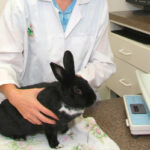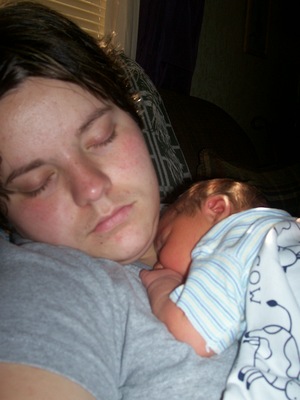So you found a litter of orphaned rabbits in your yard and are wondering “What do I do with them?”, well here’s the solution! I have successfully raised baby rabbits after their mother was killed by a dog and I would like to share my experience with you.
1. Make Sure They Are Orphaned
First you want to make sure that they really have been abandoned. I saw the dead mother so it was easier for me to tell. Rabbit mothers only visit their young for five minutes during the day to administer food and check up on the babies. This is a survival mechanism that ensures the mom does not bring predators towards the nest. Check the babies. If they feel cold, lethargic and are very bony they need care. If they are warm and wriggling they are fine.
2. Moving The Babies
Baby bunnies are quite fragile so treat them with utmost care. Prepare a large cardboard box, or even better a 20 gallon aquarium with a lid. Line it with aspen wood shavings or cloth, and place it in a warm, safe area. Cut out a door in a shoebox and present them with a place to hide. It will make them feel safer. The box must have a lid to ensure the babies do not hop out in the future!
3. Feeding Time
If the babies have not been weaned and will not accept offerings of lettuce or dandelion greens that can be found in the yard you will have to make a trip to the pet store. Cat milk formula has been known to work well as well as the following formula if cat milk is not possible:
1 can of sweetened condensed milk
3 tablespoons of heavy cream
3 tablespoons of Karo corn syrup
1 egg yolk
Combine the ingredients in a plastic bowl and heat in the microwave and heat until slightly above room temperature. Gently hold a dropper or syringe up to the baby’s mouth and squeeze small amounts of formula out for the baby. Take it easy as babies can inhale the formula and die if you are not careful. Feed the babies about every three hours.
To test for dehydration pinch the scruff lightly and watch how fast it springs back into shape. If it does so immediately the baby is fine, if very slowly the baby needs fluids.
If the babies will accept vegetables you may feed them a variety of leafy greens. Hay or straw can also be offered to weaned rabbits. These greens or milk will provide necessary water so a dish is not needed.
4. Handling
You must be extremely careful when you pick the babies up as they can get hurt and may be frightened, but it is possible to handle them to check for injury. Minimal handling is ideal as they are wild animals and should be released when they are older. As they are weaned off milk and gain weight you should consider where you are going to let them go. Typically you should return them where you found them, but if this is not possible or is near dangers you should opt for a safer area. Monitor this area for several days after they have been released if possible to ensure their adaptation to their new environment.
5. Dealing with Loss
One of your furry friends may pass away and this is a very sad event. The only thing to do is know that you gave it your best and to accept what was intended for the rabbit. Some baby rabbits are born “peanut” rabbits. This means they are missing internal organs and will not survive under any special care.
If at all possible, or if you have any concerns I highly recommend bringing these rabbits to a vet for specialized care.





